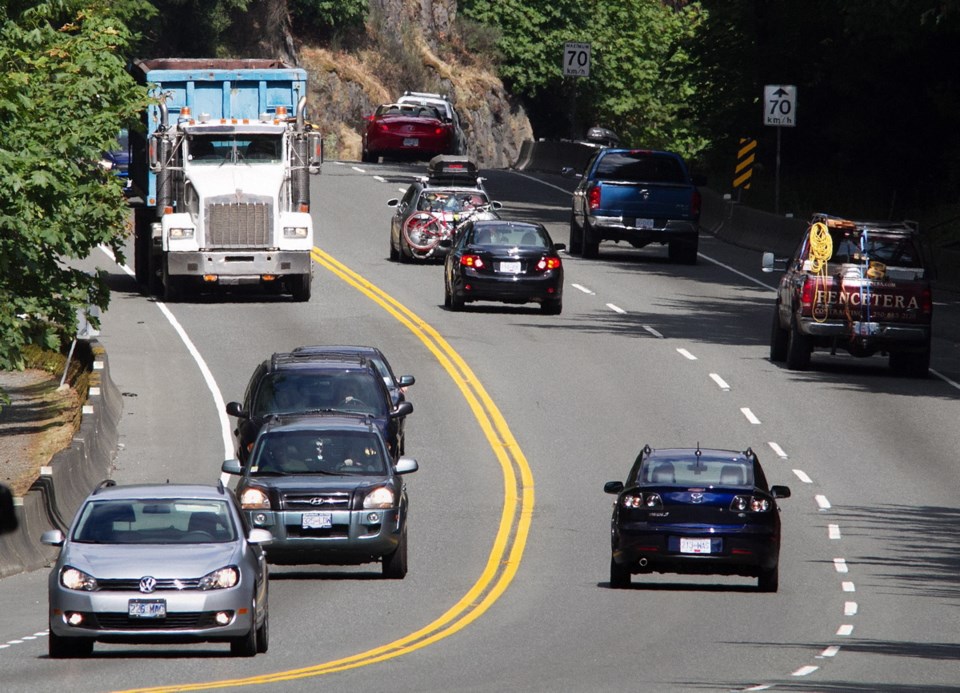Transportation Minister Todd Stone has rejected a call by B.C.’s provincial health officer to bring back photo radar.
Dr. Perry Kendall released on Thursday a 260-page report on road safety that linked a spike in traffic fatalities to the B.C. Liberal government’s decision to scrap the NDP’s photo radar program in 2001.
“A photo radar program was introduced in B.C. in 1996 and likely accounts in part for the reduced number of speed-related fatalities over the three years following its implementation,” states the report, Where the Rubber Meets the Road (PDF).
“However, in 2001, the program was cancelled, and this cancellation likely accounts in part for the subsequent increase in speed-related fatalities.”
Kendall recommended the government introduce a province-wide electronic speed-management program that could include photo radar or other technologies.
“The key thing is it has to be overt,” said deputy provincial health officer Dr. Bonnie Henry. “You have to notify people that we are going to be monitoring your speed.
That’s the way it’s a deterrent.
“There’s a whole variety of strategies that have arisen around the world that could be used, and I think it’s time for us to start looking at those again.”
Stone said the B.C. government is committed to doing “everything that we can to ensure that British Columbia’s highways and roads are as a safe as possible for the travelling public.”
But he made clear that that does not include installing photo radar, even on crash-prone stretches of highway like the Malahat.
“We do not have any plans to re-introduce photo radar in British Columbia,” he said during a conference call with reporters.
“We believe that there are more effective technologies that can be employed and, frankly, better ways to utilize precious police resources than to resurrect what was largely a failed photo radar program that really was nothing more than a tax grab for British Columbians.”
Stone also seemed to dismiss the report’s findings that photo radar helped cut fatalities and that scrapping the program resulted in more deaths.
“It’s very important not to look at any one particular measure in isolation and point to that one measure as the reason why crashes have gone down within a particular time or why crashes have gone up in a particular time,” he said.
Yet, Stone did just that, on the same conference call, claiming that “B.C.’s immediate roadside prohibition program has reduced alcohol-related fatalities by 52 per cent.”
“That’s an incredible result,” he said.
The minister also threw cold water on Kendall’s recommendation that the government amend the Motor Vehicle Act to lower the default speed limit in urban areas to 30 kilometres an hour from 50 km/h.
Kendall said the move would dramatically increase a pedestrian’s chances of survival in a crash.
“Your chances of surviving a direct impact at 50 km/h are about 15 to 20 per cent,” he said. “Your chances of surviving an impact at 30 km/h are about 80 to 90 per cent.”
Henry acknowledged that such a move would be controversial. “But there’s been a move by municipalities in many areas of B.C. to decrease the default speed limit in those municipalities to 30 or 40,” she said. “So I think the timing is right to have those discussions.”
Victoria Coun. Ben Isitt and former councillor Shellie Gudgeon failed in 2013 to get the Union of B.C. Municipalities to adopt a resolution asking the province to make 40 km/h the default speed limit in urban areas.
Victoria council later agreed to reduce and post lower speed limits on a number of city streets.
Stone said the government will review the recommendation, but making such a change would require extensive technical and engineering work.
“We wouldn’t even think of doing any of that work if we don’t have a strong endorsement to move in this direction from local government, which, to this point, is just simply not there.”


